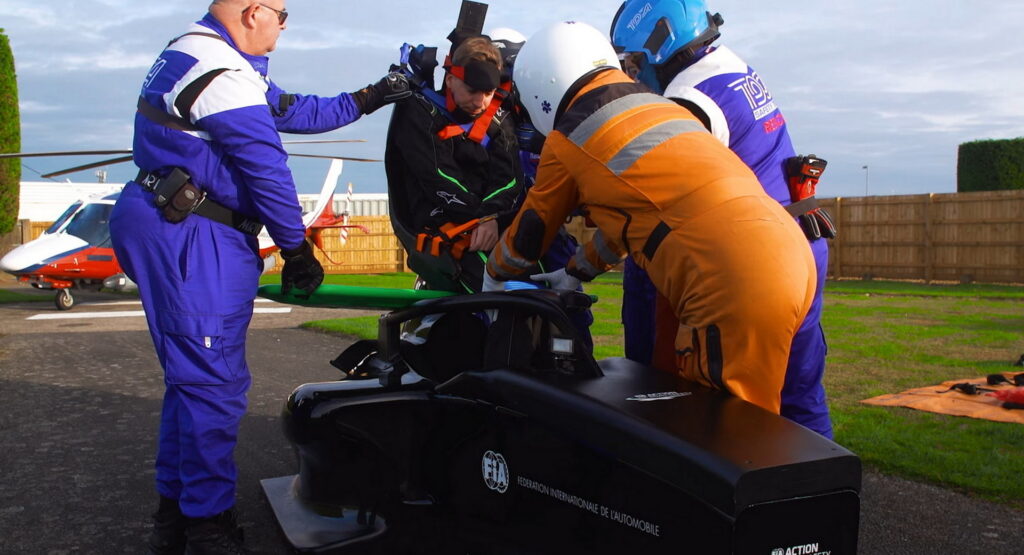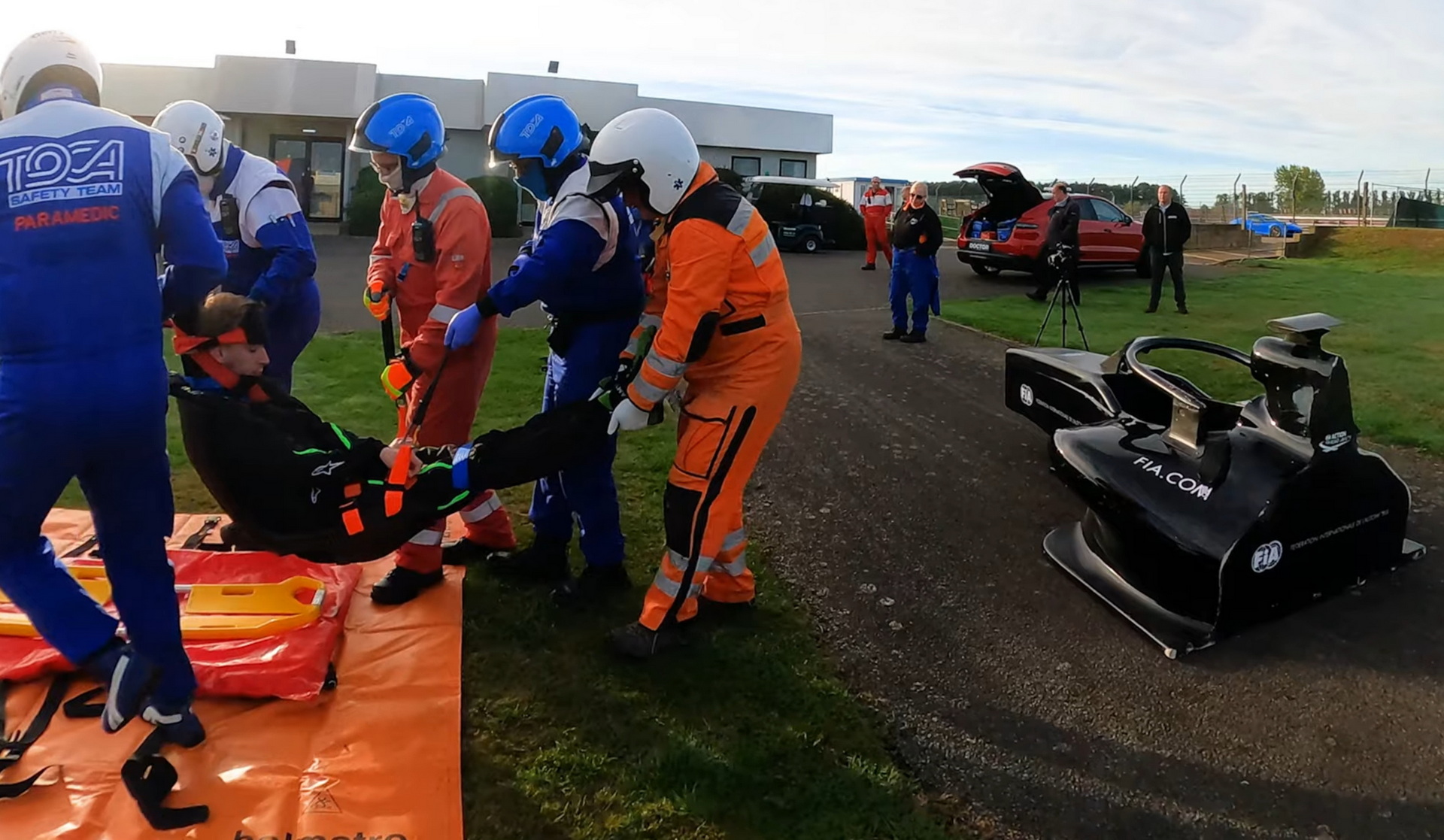It is a fortunately infrequent occurrence to see a Formula 1 driver so badly injured following an accident that they can’t get out of their car. Given the speeds and the potential danger of the sport, though, steps are in place to get them out if needed.
In a new video hosted by Matt Amys, the procedure for removing an injured driver from the cockpit of an FIA open-wheel race car is laid out. The demonstration takes place in a simulated cockpit at the Silverstone Grand Prix circuit.
The test sees Amys strapped into an F1 style racing seat with a full race suit, HANS device, and helmet. The first step is to determine whether or not the driver is conscious and, if they are, whether they are in pain.
Read Also: BMW M3 Touring Becomes The Latest Moto GP Safety Car
Next, the medical staff ask if the driver is capable of taking their own helmet and gloves off.
“If the driver can, then clearly they’re breathing,” explains Martin Hunt, a BARC Rescue Coordinator and TOCA Safety team member. “So we’ll get them to remove their own crash helmet as a first approach because, clearly, it’s way better if somebody removes their own helmet rather than us doing it.”
Next, the drivers get strapped into their seats. It may seem like they should already be strapped into the car (and they are), but the whole seat is used as a makeshift stretcher to remove the driver from the car.
In order to keep them secure as they are being removed, all FIA-approved open-wheel racing seats come with hidden straps that are wrapped at several locations around the driver. The rescue team then uses another set of straps to hoist the seat, and the driver, out of the vehicle.
“So there are four lifting points, and you have four people to lift,” says Hunt. “Now the cars are fitted with a halo, it’s a little bit more awkward than it was previously, it’s a bit of a higher lift.”
On the way out of the car, the team places a board under the driver to allow them to rest the seat on the car, while the rescue members all get to one side and free the driver from the car completely.
From there, the driver can be taken to the medical center for further checks. Although it’s an infrequent occurrence, it is vitally important, so the team has to practice it often in order to ensure that when they’re called upon to do it for real, they can remove the driver quickly and gently.





